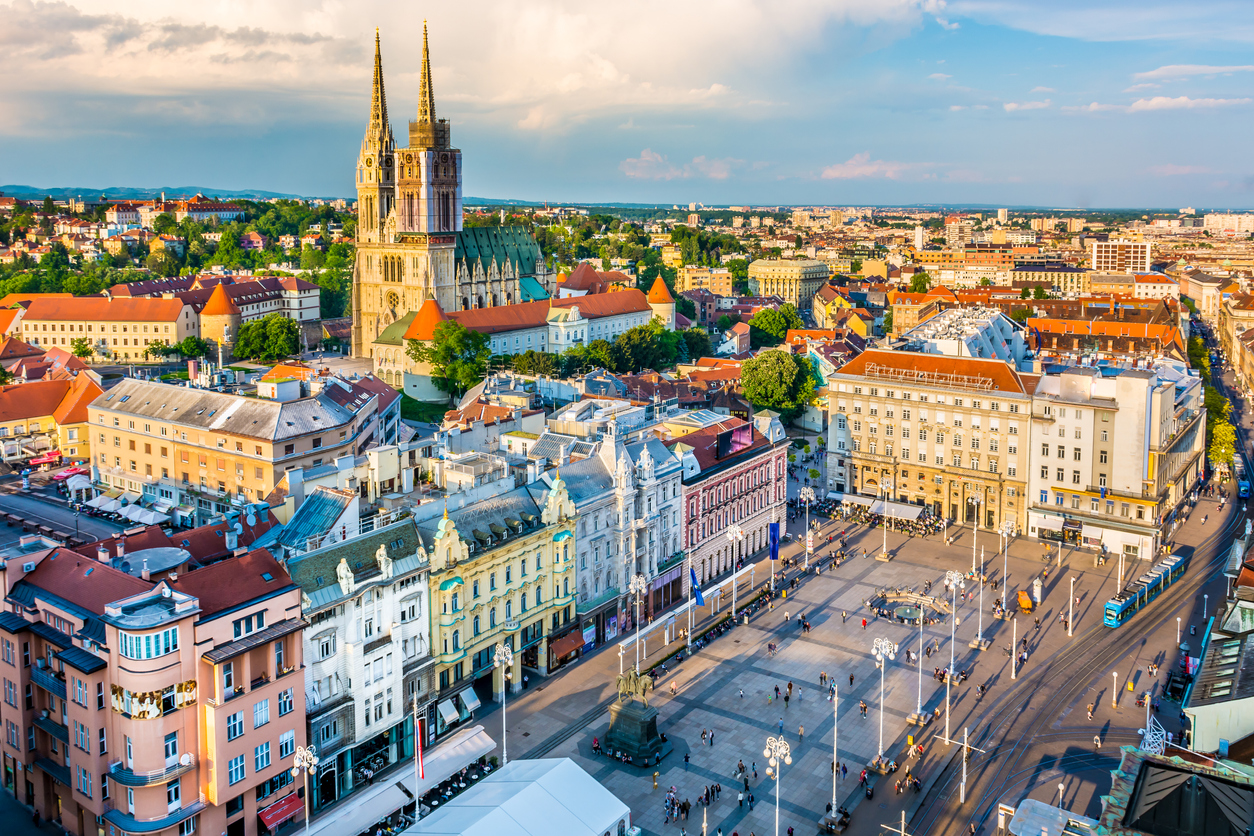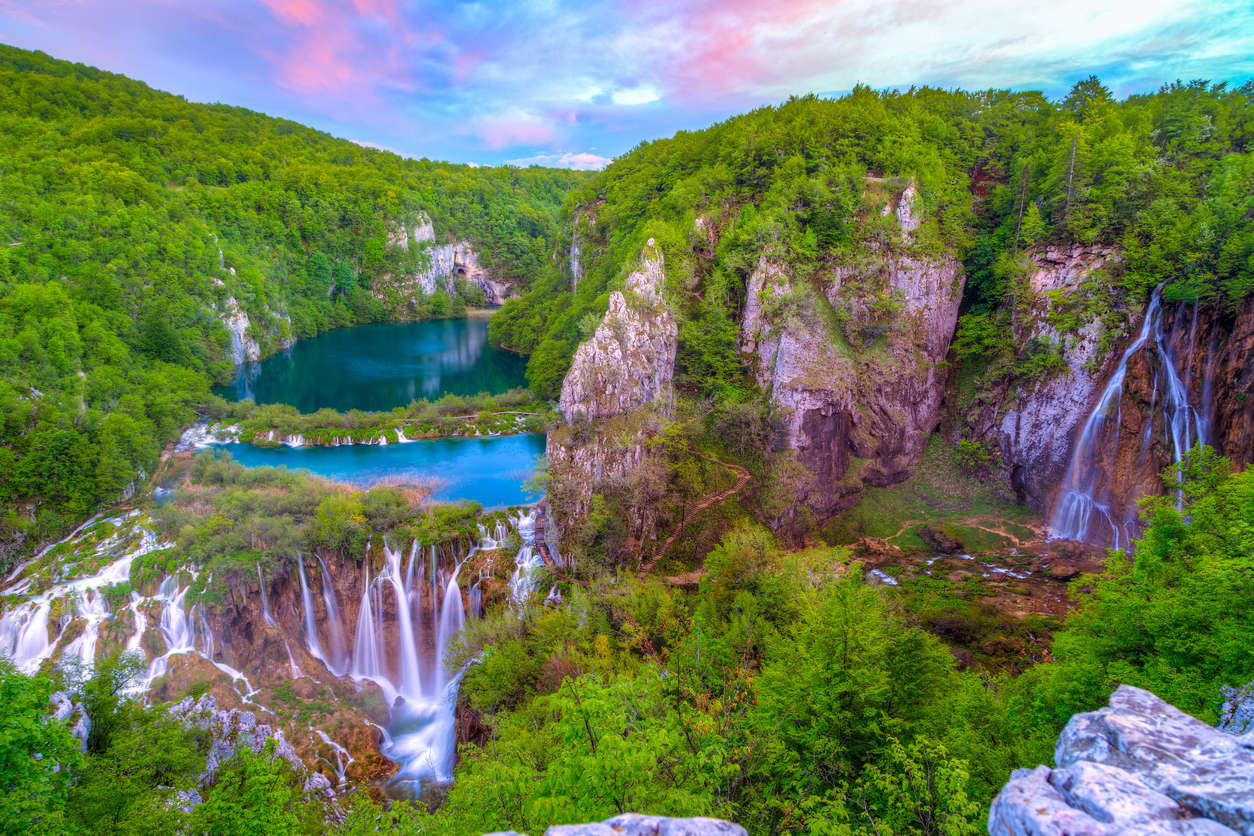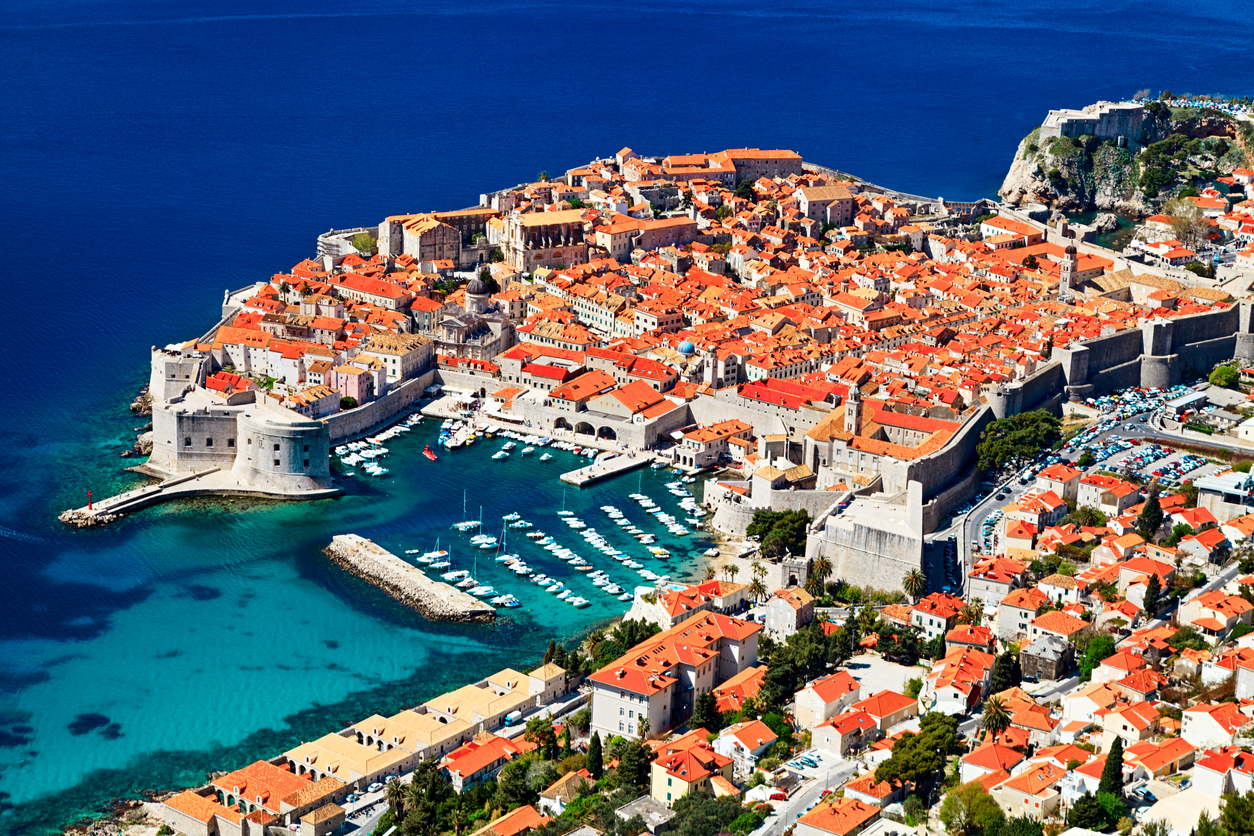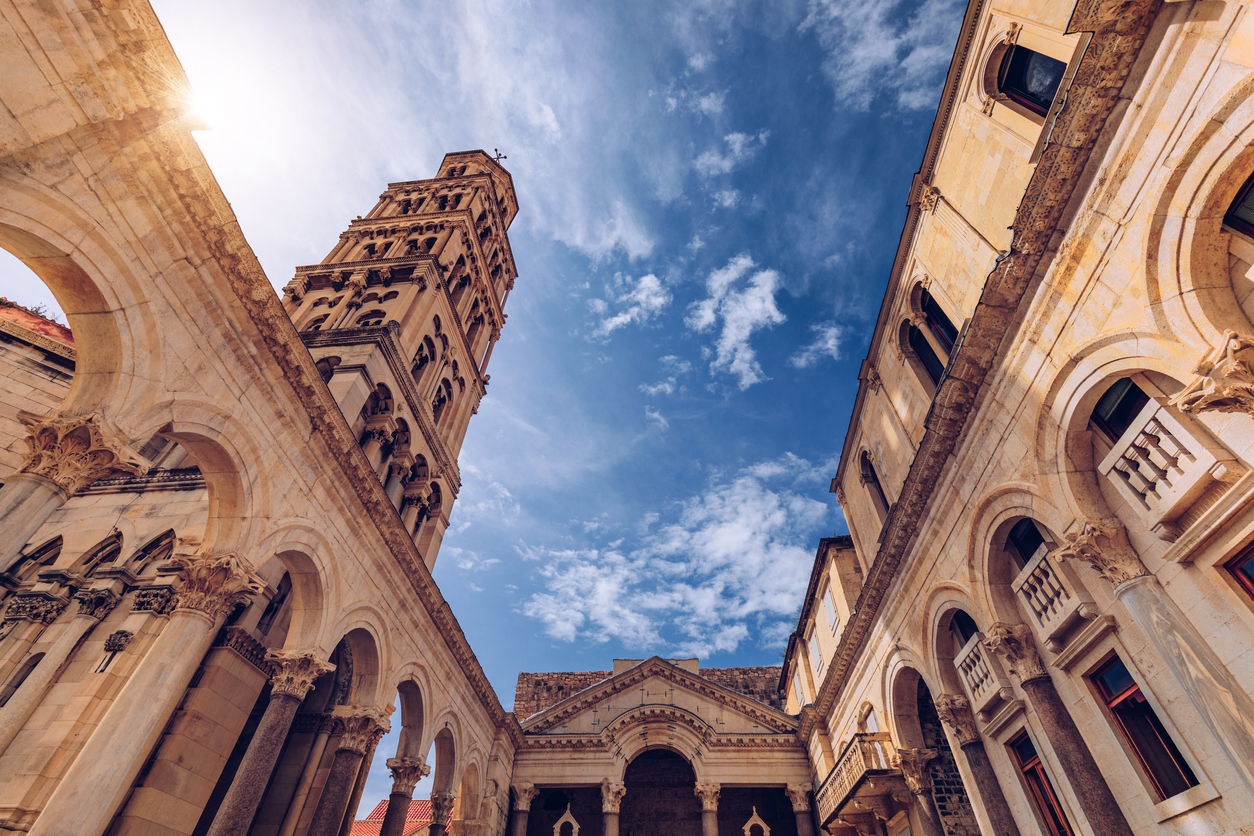 xbrchx
xbrchx
As countries go, Hrvatsko is a particularly intriguing one in many ways – Mediterranean but also Slavic, and like Spain also boasting some of Europe‘s loveliest beaches, yet also an astonishing architectural and cultural heritage stretching back to classical antiquity and beyond. And in addition to two flights a week to capital Zagreb, Iberia gives a lot of love to the magnificent Dalmatian Coast on the Adriatic Sea with summer flights to Dubrovnik, Split, and now a new year-round destination, Zadar. So as a big Croatia fan myself, please allow me to introduce to you Zadar and Zagreb, as well as reprise some of the Dalmatian gems that so enchant holidaymakers year after year.
 xbrchx
xbrchx
Zadar
Ensconced on the Dalmatian Coast 90 minutes north of Split and four hours from Dubrovnik, Zadar (pop. 75,000) is actually Croatia’s oldest still inhabited city, dating back to its 9th-century-BCE founding by an Illyrian tribe (speaking a language related to Albanian), and variously ruled by ancient Rome, the Byzantine Empire, the Venetian Republic, the Austro-Hungarian Empire, and the Kingdom of Italy before becoming part of Yugoslavia in the wake of World War II, then finally in 1991 independent Croatia. This variegated history is reflected in its walled mediaeval quarter paved in white stone, as well as landmarks such as its Roman forum and aqueduct, as well as a variety of Romanesque, Gothic, and Venetian-Renaissance churches and other buildings. All manner of art and artifacts fill its museums, and there’s also some cool contemporary stuff, such as a solar-powered art installation and a waterside “sea organ” built in 2005, whose tubes hidden beneath marble steps which play atonal but oddly compelling “music” when struck by sea waves. Zadar makes an excellent base for nearby beaches such as Borik, Diklo, Kolovare, and Ugljan Island; ecotourism at Plitvice (below) and Krka national parks; and lovely undeveloped isles such as Dugi Otok and Kornati.
 Dreamer4787
Dreamer4787
Zagreb
Croatia’s modest but handsome capital (pop. 803,000, metro area 1.1 million) dates back to Roman Andautonia in the 1st through 5th centuries CE, and though on the travel radar it often gets bypassed in favour of the sunsplashed flash of the Dalmatian coast, there’s a whole lot here to love, as well. The historic city centre, divided into the mediaeval Gornji Grad (Upper Town) and the 19th-century Donji Grad (Lower Town) and linked by the central square Trg Bana Jelačića (above), is full of handsome, mostly 18th-through-early-20th-century century buildings that’re a mix of neo-Baroque, neoclassical, and Art Deco. Fairly compact and great for strolling, it includes highlights such as the narrow but soaring cathedral (a late-19th-century neo-Gothic reconstruction of the 13th-century original, which burned down, as was fairly common back in the day); the colourful Dolac produce market; and a number of fine museums both expected (art both classic and modern, history, archaeology, ethnography, crafts) and unexpected (how about a Museum of Illusions – or even quirkier, a Museum of Broken Relationships?).
 Remedios
Remedios
Furthermore, Zagreb has sure come a long way since I first visited in 1995, now spiffed up and sporting a vibrant – and young-skewing – street and cultural/artistic life; and further enlivened by a year-round parade of exciting festivals and special events. And finally, it’s well worth setting aside a day or two for day trips or overnighters to natural stunners such as Lonjsko Polje, Plitvice National Park (above), and Slejeme/Medvednica National Park, as well as charming towns like Krapina, Osijek, Samobor, and Varaždin (and if you want to get another stamp in your passport, hop across the Slovenia border to check out another handsome little Balkan capital, Ljubljuana, a 1½- to three-hour drive, depending on whether you take the motorway or the scenic route).
 rusm
rusm
Dubrovnik
Croatia’s most reknowned destination (pop. ), the mediaeval walled city on the Dalmatian coast once known (when the Venetian Republic was the big dog hereabouts) as Ragusa, is one of those places where there’s a phenomenal photo opportunity every three metres, starting with its iconic and impressive city walls, offering vistas over the red-tiled rooftops; as well as impressive monuments like the Pile Gate, the Onuphrius Fountain; and Orlando’s Column. Other sightseeing highlights include the Franciscan and Dominican monasteries, the Baroque St. Blaise Church, and the Rector’s Palace (housing a museum of city history), while the magnificent Renaissance/Gothic Sponza Palace hosts a variety of concerts. And in summertime, notwithstanding the photo at top of Old Town’s main street Stradun, this time of year there the streets are usually packed, as are the pubs and dance clubs with of young people till dawn; outdoor perches for coffee and aperitifs; and plenty of restaurants where you can savour the catch of the day from the nearby waters (ripoffs are not unknown, however, so check the menus out front before you sit down and order). Additionally, there are all sorts of concerts and events including the magnificent Summer Festival every 10 July to 25 August.
 mbbirdy
mbbirdy
And of course there are numerous gorgeous beaches and little towns within easy distance of Dubrovnik – starting with the small island of Lokrum, a 15-minute ferry ride away, with am early-11th-century Benedictine monastery, a botanical garden, and a pretty beach (with a nudist section, even); other coastal stars include Cavtat, Hvar (top), and Korčula (abovce; read more about those here).
 DaLiu
DaLiu
Split
Founded in the 6th century BCE against a backdrop of high, rocky hills as the Greek colony Aspálatos, within several centuries Croatia’s now second largest city (pop. 240,000) had not only become Roman Aspalatum but also was the spot where the locally-born emperor Diocletian chose to have his massive retirement palace built in 305 CE. After the area invaded by the proverbial barbarians in the 7th century (among them the Slavs who ended up dominating the Balkans ever since), many locals took refuge in the abandoned Diocletian’s Palace (above), and to this day their successors still abide here among the marble and columns and temples. A UNESCO World Heritage Site that is the nucleus of Split’s compact old quarter, the palace is not only the world’s most complete and best preserved Roman palace ruin, but also became an important inspiration for the neoclassical architecture movement that swept Europe beginning in the 18th century. Almost no new construction has been allowed within this three-hectare (seven-acre) rectangle, and it is a truly extraordinary experience to stroll amid its architecture – alternately monumental and intimate – shoulder to shoulder with the locals who make it more than a mere museum. Other highlights include the Riva palm-lined pedestrian promenade running along the palace’s south side and the waterfront, where locals come to stroll, shop and avail themselves of the many restaurants and outdoor cafés. And as you might expect, the local archaeological museum is a gem.
 mbbirdy
mbbirdy
There are great day trips and overnighters out of Split, as well – the closest being Marjan Forest Park, on a hill just north of town. Here you can find a variety of activities both outdoorsy and cultural, starting with beaches such as Bene and the pristine (and partly nude!) Kašjuni, where you can splash around in azure waters, as well as hiking trails; restaurants; swimming pools; the 16th-century St. Jere rock church; a natural history museum; a tiny zoo; and a historic Jewish cemetery. A bit farther afield are a bunch of fantastic beaches as fetching small towns, such as Bačvice, Brač Island (with its famous Zlatní Rat beach, above), the Makarska Riviera, Ovčice, and the Palenki Islands.

